DIAMOND CARAT GUIDE
Understanding Carats: The precise measure of diamond weight and its impact on value.
What is a Carat?
Diamond carat is a unit of weight, not size, used to measure diamonds and other gemstones. One carat equals 0.2 grams or 200 milligrams. The term originates from the carob seed, historically used as a counterweight in balance scales due to its consistent weight. Carat weight directly influences a diamond's value, with larger diamonds generally being more valuable due to their rarity. However, it's crucial to understand that two diamonds of equal carat weight can vary significantly in value based on their cut, color, and clarity. When considering diamond carat, remember that it's just one factor in a diamond's overall quality and appearance
THE CUSHLA WHITING DIFFERENCE
Our Gemologist only selects diamonds with the very best cut, not only so they are bright and beautiful, but also to ensure that they have the best proportional millimetre size for their carat weight.
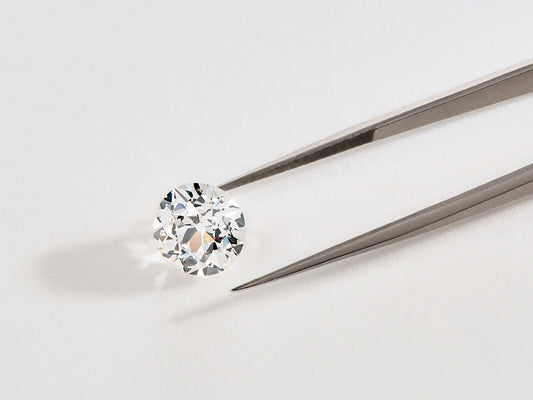
How Big is a Carat?
Carat weight is a measure of a diamond's mass, not its visual size. It's important to understand that diamonds of identical carat weight and shape can appear visually different due to variations in cut and proportions. This is where carat weight interacts with the cut of the diamond, which determines its proportions and optical properties.
The cut of a diamond significantly affects how its weight is distributed. A poorly cut round diamond might be too deep or have an excessively thick girdle, hiding weight in areas that don't contribute to its face-up appearance. For instance, a 1.20-carat diamond with 'hidden' weight may look similar in size to a well-cut 1-carat diamond when set. This means a customer could potentially pay for additional weight without gaining any visual benefit.
Diamond shape also plays a crucial role in determining visual dimensions. Elongated shapes like ovals and emeralds often appear larger than shapes with a 1:1 ratio, such as rounds. This is because elongated shapes can distribute their weight across both length and depth. As a result, a 1-carat oval diamond will typically look larger than a 1-carat round diamond of the same quality. At Cushla Whiting, we can provide detailed comparisons of how different shapes affect the face-up size of diamonds, helping you make an informed decision that aligns with your preferences and budget.
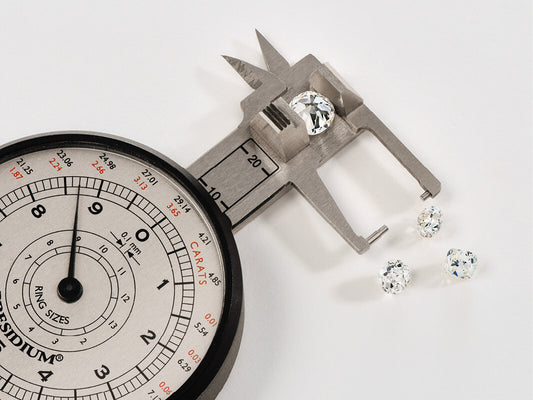
How is Diamond Carat Measured?
While many confuse carat as a measurement of physical size, it is actually a measurement of weight used to describe diamonds and other gemstones. One carat equals 0.2 grams. One carat is 200 milligrams, and each carat is divided into 100 ‘points’ to allow exact measurements to the thousandth decimal place. To ensure precision, accuracy, and consistency, diamond carat is measured by professionals with specialized micro-balance scales.
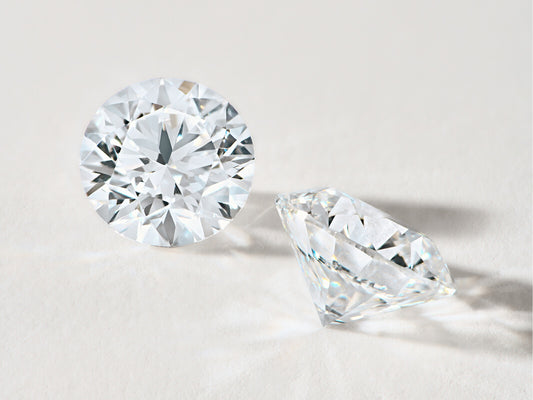
Are Diamond Carat and Diamond Size the Same Thing?
Diamond carat and size are distinct concepts, though they're often confused. Carat is a measure of weight, not size. While there's a correlation between carat weight and size, it's not a direct relationship.
Different gemstones have varying densities, meaning two gems of the same carat weight can appear quite different in size. Additionally, a diamond's cut significantly impacts its appearance. A poorly cut diamond may hide weight in areas that don't contribute to its face-up size. For instance, a deep cut or thick girdle can result in a 1.20-carat diamond looking similar to a well-cut 1-carat diamond when set.
At CUSHLA WHITING, we emphasize the importance of considering all aspects of a diamond, not just carat weight. A larger carat weight doesn't always translate to a visually larger or more beautiful diamond. We guide our clients to understand how cut quality, shape, and proportions interact with carat weight to determine a diamond's overall appearance and value. This approach ensures you get the best visual impact for your investment.
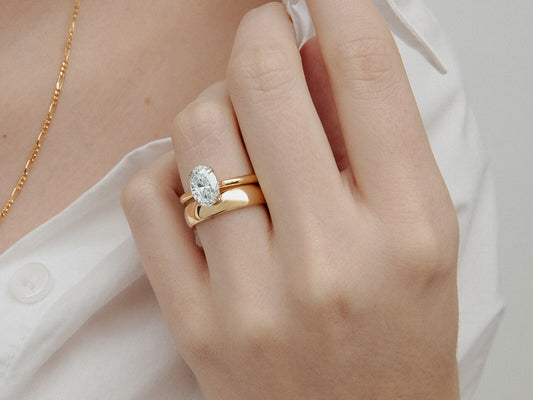
What Does CTW Mean?
CTW, TCW, and TW all stand for 'Carat Total Weight'. These terms are used in the jewelry industry to describe the combined weight of multiple diamonds in a single piece or set of jewelry. At CUSHLA WHITING we expressly use 'CTW' to describe the Carat Total Weight of a piece of fine jewellery. For instance, when describing diamond stud earrings, the CTW represents the total weight of both diamonds together, not each individual earring. It's crucial to clarify whether a quoted weight refers to individual diamond weights or total carat weight when comparing jewelry pieces. This distinction is particularly important for items with multiple stones, as it significantly affects both the appearance and value of the jewelry. Always ask for clarification if you're unsure about how the carat weight is being presented.

Diamond Size Chart
This chart provides a visual comparison of round diamond sizes at different carat weights, as viewed from above. It's important to note that diamonds of the same carat weight can appear different in size. This variation is due to the interplay of shape, density, and depth. For instance, an oval diamond often appears larger than a round diamond of the same weight due to its elongated shape. At CUSHLA WHITING, we emphasize that understanding these visual differences is crucial when selecting a diamond. While carat weight is important, the shape you choose can significantly impact the diamond's perceived size and overall appearance in your chosen setting.

How Important is Diamond Carat?
Diamond carat weight is a crucial factor for many customers when selecting a diamond. As one of the 4 C's (cut, color, clarity, and carat), it plays a significant role in determining a diamond's quality and value.
Carat weight has a substantial impact on price, particularly when other factors remain constant. For instance, if cut, color, and clarity are identical, a diamond's price will increase with carat weight due to the rarity of larger diamonds. However, it's important to note that two diamonds of the same carat weight can have vastly different prices if their cut, color, and clarity vary.
Understanding the relationship between carat weight and price is essential for making an informed purchase. While larger diamonds are often desirable, balancing carat weight with the other three C's can often result in finding a diamond that offers the best value and visual appeal within a given budget.
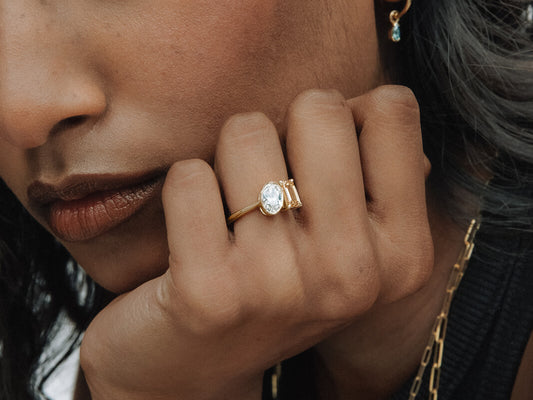
How Diamond Carat Impacts Price
Carat weight significantly influences diamond pricing, but not in a linear fashion. Larger diamonds command higher prices due to their natural scarcity. Consequently, a one-carat diamond will cost more than two half-carat diamonds of equivalent quality combined.
The diamond industry recognizes certain weight thresholds as 'magic sizes' - typically at ½ carat, ¾ carat, and 1 carat. At these points, the price per carat increases dramatically due to higher demand for these popular weights. For instance, a 1.03-carat diamond may look indistinguishable from a 0.97-carat diamond of the same cut, color, and clarity, yet the price difference can be substantial because the former crosses the 1-carat threshold.
It's worth noting that the impact of color or clarity grades on value intensifies with larger diamonds due to their rarity. In contrast, for diamonds under 1 carat, grade differences have a less pronounced effect on price as these smaller stones are more abundant.
Understanding these pricing dynamics can help you make a more informed decision when balancing carat weight with your budget and desired diamond characteristics. Sometimes, choosing a diamond just below a 'magic size' can offer excellent value without a noticeable difference in appearance.
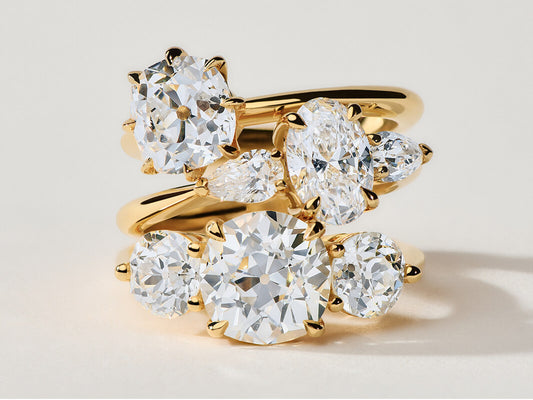
Is Carat the Only Factor That Affects the Size Appearance of a Diamond?
Carat weight is not the sole determinant of a diamond's apparent size. Several other factors play crucial roles:
SHAPE: Elongated shapes like oval and emerald often appear larger than round diamonds of the same carat weight. This is because they distribute their weight across length and depth, creating a larger face-up area.
DEPTH: Two diamonds of the same shape and carat weight can appear different in size due to varying depths. A shallower diamond typically has a larger face-up appearance than a deeper one of the same carat weight.
SYMMETRY: Well-proportioned diamonds tend to maximize their face-up appearance.
These factors are typically listed on a diamond's official certification report. By understanding and considering these elements, you can potentially select a diamond that appears larger without necessarily increasing carat weight and cost.
For example, a well-cut 1-carat oval diamond might look larger than a poorly-cut 1.2-carat round diamond, despite having less carat weight. This knowledge allows you to make more informed decisions, potentially maximizing visual impact while optimizing your budget.
DIAMOND CARAT FAQs
Traditionally the 1 carat diamond has been the average size of an engagement ring but at the end of the day budget will determine diamond size. The introduction of lab diamonds has vastly increased the average size of diamonds purchased by customers for engagement rings, with larger carat weight diamonds now accessible to the average budget. We expect this trend of customers wanting larger diamonds in lab to decrease as the perceived value of lab diamonds used in engagement rings falls away with time.
The average carat for engagement rings is around 1 carat. The average lab diamond engagement ring is typically slightly larger than its natural counterparts.